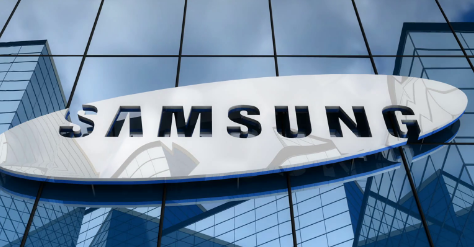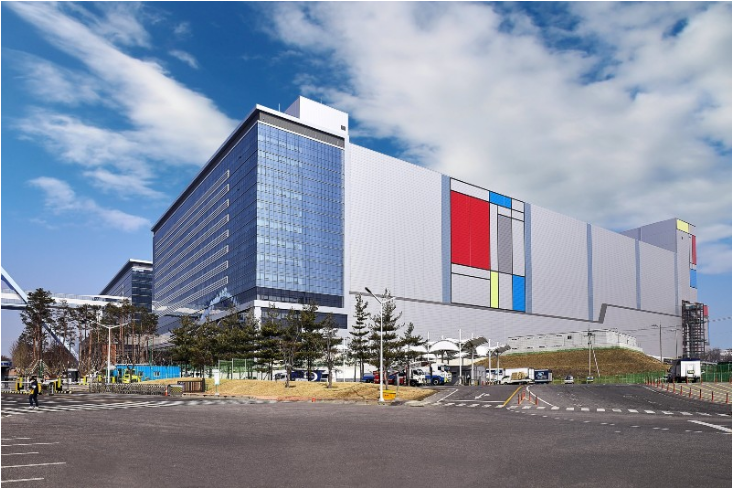Samsung Was No. 1 in Chip Sales in Q2
South Korea's Samsung Electronics Co. Ltd. has unseated Intel Corp. as the world's leading semiconductor vendor, at least for one quarter.
Samsung (Seoul) reported this week that its semiconductor division posted sales for the second quarter of 17.58 trillion won, or about $15.78 billion, besting the $14.8 billion in second quarter sales that Intel reported Thursday (July 27).
Analysts have been saying since early this year that Samsung could rise to No. 1 in chip sales in 2017, surpassing Intel, was had led the semiconductor industry in sales every year since 1992. The booming memory chip market, which is led by Samsung, is driving growth for Samsung and other memory vendors at a faster pace than makers of logic chips.
Market research firm IC Insights Inc. noted in May that the passing of the torch could occur in the second quarter, based on the second quarter forecasts issued by the two chip giants.
It's unclear how long Samsung can retain the top spot in chip sales. The market for memory chips is notoriously cyclical. Growth in sales for DRAM and flash memory chips has begun to slow, and analysts forecast that a downturn in memory may be looming late next year of in 2019 as new capacity comes online and new Chinese competitors enter the fray.
However, Bill McClean, president of IC Insights, said in an email exchange with EE Times, that Samsung is likely to grow chip sales faster than Intel on average and may well have a handle on the No. 1 spot for at least the foreseeable future.
Given its size and product mix, Intel will most likely grow at or near the growth rate of the total semiconductor market excluding memory, roughly 5 to 6 percent per year, McClean said. "Given that there are only 3 DRAM players left and Samsung is so strong in 3D NAND flash, Samsung on average is likely to grow slightly faster than the overall market over the next few years," McClean said. “While the memory market is still cyclical and could cause Samsung to drop below Intel once again in annual sales, the trend over the long term is likely to see Samsung at the top of the ranking more often than not."
McClean also noted that the larger chip vendors are capturing more of the overall market today than in years past, with the top 10 chip vendors holding 58 percent of the market in the first half of this year.
Intel’s sales in 2016 represented 15.6 percent of the total semiconductor market. In 1993, Intel was the No. 1 chip vendor with 7 percent market share and in 2006 it had 11.9 percent market share, McClean said.
"In contrast, Samsung's share was 2.8 percent in 1993, 7.4 percent in 2006 and 12.1 percent in 2016," McClean said. "So, it seems like Samsung surpassing Intel as No. 1 has more to do with Samsung gaining market share than Intel losing market share."
Samsung's strong chip sales lifted the conglomerate's overall profit in the second quarter to 14.1 trillion won (about $12.6 billion), the highest ever quarterly profit for the nearly 80-year-old company. Nearly 60 percent of Samsung's second quarter profit came from the semiconductor division.
在线留言询价

Samsung cuts NAND flash memory production

Samsung is developing next-generation memory chips for large-scale AI applications such as ChatGPT
- 一周热料
- 紧缺物料秒杀
| 型号 | 品牌 | 询价 |
|---|---|---|
| RB751G-40T2R | ROHM Semiconductor | |
| MC33074DR2G | onsemi | |
| CDZVT2R20B | ROHM Semiconductor | |
| BD71847AMWV-E2 | ROHM Semiconductor | |
| TL431ACLPR | Texas Instruments |
| 型号 | 品牌 | 抢购 |
|---|---|---|
| TPS63050YFFR | Texas Instruments | |
| BP3621 | ROHM Semiconductor | |
| ESR03EZPJ151 | ROHM Semiconductor | |
| BU33JA2MNVX-CTL | ROHM Semiconductor | |
| IPZ40N04S5L4R8ATMA1 | Infineon Technologies | |
| STM32F429IGT6 | STMicroelectronics |
AMEYA360公众号二维码
识别二维码,即可关注


![[News] Samsung Fails to Secure Qualcomm’s 3nm Orders for the Coming Year, Dual Foundry Strategy Postponed [News] Samsung Fails to Secure Qualcomm’s 3nm Orders for the Coming Year, Dual Foundry Strategy Postponed](https://res.ameya360.com//basedata/oldassets/images/20231201/20231201145007_507.png)























